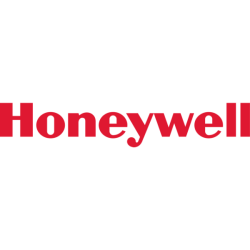Overall, Honeywell demonstrates a strong business model with competitive advantages and a focus on innovation. However, potential challenges exist due to economic pressures and integration costs from acquisitions. Future prospects appear robust, particularly with strategic separations aimed at enhancing operational focus and growth.
Analysis Date: February 6, 2025
Last Updated: March 12, 2025
Trailing Twelve Months (TTM) values provide a view of the company's performance over the last year.
Graham Value Metrics
Benjamin Graham's value investing approach focuses on finding stocks with a significant margin of safety between their intrinsic value and market price.
Intrinsic Value
Estimated fair value based on Graham's formula
$199.47
Current Market Price: $190.45
IV/P Ratio: 1.05x (>1.0 indicates undervalued)
Margin of Safety
Gap between intrinsic value and market price
5.0%
Graham recommended a minimum of 20-30% margin of safety
Higher values indicate a greater potential discount to fair value
ROE: 29.45238187426595
ROA: 1.7088674929517527
Gross Profit Margin: 38.27510066242369
Net Profit Margin: 14.820106507338615
Trailing Twelve Months (TTM) values provide a view of the company's performance over the last year.
High Return on Equity
A return on equity (ROE) of 29.45% demonstrates strong profitability and effective use of shareholders' equity to generate profits, indicating a solid performance.
Strong Gross and Net Profit Margins
38.28
Gross Profit Margin
Gross profit margin at 38.28% and net profit margin at 14.82% show that the company retains a significant portion of revenue after costs, indicating effective cost management.
Moderate Operating Profit Margin
19.82
Operating Profit Margin
An operating profit margin of 19.82% is decent but indicates that there might be room for improvement in operational efficiency to maximize profits.
About Profitability Metrics
Profitability metrics measure a company's ability to generate earnings relative to its revenue, operating costs, and other relevant metrics. Higher values generally indicate better performance.
Return on Equity (ROE)
Measures how efficiently a company uses its equity to generate profits
29.45%
10%
15%
Higher values indicate better returns for shareholders
TTM (as of 2025-04-16)
Return on Assets (ROA)
Measures how efficiently a company uses its assets to generate profits
1.71%
3%
7%
Higher values indicate better asset utilization
TTM (as of 2025-04-16)
Gross Profit Margin
Percentage of revenue retained after accounting for cost of goods sold
38.28%
20%
40%
Higher values indicate better efficiency in production
TTM (as of 2025-04-16)
Net Profit Margin
Percentage of revenue retained after accounting for all expenses
14.82%
8%
15%
Higher values indicate better overall profitability
TTM (as of 2025-04-16)
Reasonable Current and Quick Ratios
The current ratio of 1.31 and quick ratio of 1.01 indicate that the company has adequate liquidity to cover its short-term obligations, which is a good sign of financial stability.
Strong Interest Coverage Ratio
7.21
Interest Coverage Ratio
An interest coverage ratio of 7.21 shows that the company can comfortably meet its interest obligations, indicating a solid financial position.
High Debt-to-Equity Ratio
1.12
Debt-to-Equity Ratio
A debt-to-equity ratio of 1.12 indicates that the company employs a significant amount of debt compared to equity, which could elevate financial risk, especially in downturns.
About Financial Health Metrics
Financial health metrics assess a company's ability to meet its financial obligations and its overall financial stability.
Debt to Equity Ratio
Total debt divided by total equity
1.12x
1.0x
2.0x
Lower values indicate less financial leverage and risk
Less than 1.0 is conservative, 1.0-2.0 is moderate, >2.0 indicates high risk
Q4 2024
Current Ratio
Current assets divided by current liabilities
1.31x
1.0x
2.0x
Higher values indicate better short-term liquidity
Less than 1.0 is concerning, 1.0-2.0 is adequate, greater than 2.0 is good
Q4 2024


